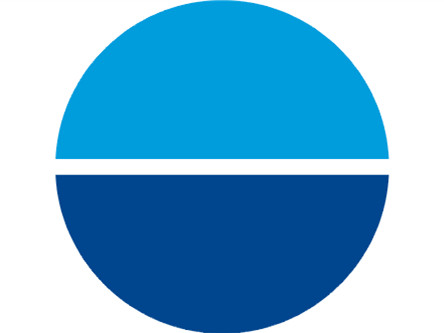CIMC(02039)
Search documents
中集集团(02039.HK)拟增加3亿港元额度回购部分H股股份
Ge Long Hui· 2025-12-18 12:54
格隆汇12月18日丨 中集集团(02039.HK)公告,截至2025年12月18日,公司已回购H股股份为60,491,200 股,已使用的资金总额为港币450,518,048.00元(不含交易费用)。为进一步维护股东权益,增强投资者信 心,在综合考虑公司财务状况、未来发展和合理估值水平等因素后,公司拟在2024年度股东大会授权额 度内增加H股回购份额。 2025年12月18日,公司召开第十一届董事会2025年度第16次会议,审议通过了《关于使用一般性授权回 购部分H股股份(第二批)方案的议案》,同意公司继续使用H股回购一般性授权,新增港币3亿元(含)用 于第二批H股回购。 ...
中集集团(02039)拟新增3亿港元用于第二批H股回购

智通财经网· 2025-12-18 12:54
智通财经APP讯,中集集团(02039)公布,为进一步维护股东权益,增强投资者信心,在综合考虑公司财 务状况、未来发展和合理估值水平等因素后,公司拟在2024年度股东大会授权额度内增加H 股回购份 额。2025年12月18日,公司召开第十一届董事会2025年度第16次会议,审议通过了《关于使用一般性授 权回购部分H股股份(第二批)方案的议案》,同意公司继续使用H股回购一般性授权,新增港币3亿元 (含)用于第二批H股回购。 ...
中集集团(02039) - 自愿性公告 - 使用一般性授权回购部分H股股份(第二批)

2025-12-18 12:47
中國國際海運集裝箱(集團)股份有限公司 CHINA INTERNATIONAL MARINE CONTAINERS (GROUP) CO., LTD. (於中華人民共和國註冊成立之股份有限公司) 香港交易及結算所有限公司及香港聯合交易所有限公司(「香港聯交所」)對本公告的內容概不 負責,對其準確性或完整性亦不發表任何聲明,並明確表示,概不對因本公告全部或任何部 份內容而產生或因倚賴該等內容而引致的任何損失承擔任何責任。 本公司於2025年5月15日召開2024年度股東大會,其中包括同意給予董事會關於 回購H股的一般性授權。為了進一步提振投資者信心,順應監管鼓勵回購的政策 方向,董事會同意根據上述H股回購一般性授權,按照《香港聯合交易所有限公 司證券上市規則》(「《香港上市規則》」)、《中國國際海運集裝箱(集團)股份有限公 司章程》(「《公司章程》」)及其他適用法律法規的規定,繼續實施第二批H股股份 回購。本次回購的主要內容如下: 2 (股份代號:02039) 自願性公告 使用一般性授權回購部分H股股份(第二批) 本公告在中國境內和香港同步刊登。本公告乃由中國國際海運集裝箱(集團)股 份有限公司(「本公司」或「 ...
中集集团(000039) - 中国国际海运集装箱(集团)股份有限公司关于与深圳市融资租赁(集团)有限公司2026-2028年度日常关联交易预计情况的公告

2025-12-18 12:46
一、关联交易基本情况 (一)关联交易基本概述 1、于 2023 年 2 月 24 日,中国国际海运集装箱(集团)股份有限公司(以下简称 "本公司"或"公司",与其子公司合称"本集团")与深圳市融资租赁(集团)有限公 司(原名"中集融资租赁有限公司",以下简称"深圳租赁",与其子公司及联合营企业 (指持股 30%以上公司)合称"深圳租赁集团")签署框架协议(以下简称"《现有协议》"), 本集团将持续地为深圳租赁集团提供商品及/或服务,以及接受深圳租赁集团提供的商 品及服务业务,并约定了 2023-2025 年度日常关联交易的建议上限金额。 2、2025 年 12 月 18 日,考虑到《现有协议》将于 2025 年 12 月 31 日到期,基于本 公司业务需要,本公司与深圳租赁续签日常关联交易协议,约定 2026-2028 年度交易上 限(以下统称"建议上限",签署的协议以下简称"《框架协议》",本次交易事项以下简 称"本次关联交易")。 股票代码:000039、299901 股票简称:中集集团、中集 H 代 公告编号:【CIMC】2025-110 中国国际海运集装箱(集团)股份有限公司 关于与深圳市融资租赁(集 ...
中集集团(000039) - 中国国际海运集装箱(集团)股份有限公司关于与中集鑫德租赁(深圳)有限公司日常关联交易预计情况的公告

2025-12-18 12:46
股票代码:000039、299901 股票简称:中集集团、中集 H 代 公告编号:【CIMC】2025-111 中国国际海运集装箱(集团)股份有限公司 关于与中集鑫德租赁(深圳)有限公司日常关联交易 预计情况的公告 本公司及董事会全体成员保证公告内容的真实、准确和完整,不存在虚假记载、误 导性陈述或重大遗漏。 一、关联交易基本情况 (一)关联交易基本概述 1、于 2023 年 2 月 24 日,中国国际海运集装箱(集团)股份有限公司(以下简称 "本公司"或"公司",与其子公司合称"本集团")与深圳市融资租赁(集团)有限公 司(原名"中集融资租赁有限公司",以下简称"深圳租赁",与其子公司及联合营企业 (指持股 30%以上公司)合称"深圳租赁集团")签署框架协议(以下简称"《现有协议》"), 本集团将持续地为深圳租赁集团提供商品及/或服务,以及接受深圳租赁集团提供的商 品及服务业务,并约定了 2023-2025 年度日常关联交易的建议上限金额。 2024 年 12 月 19 日,本公司全资子公司中集集团财务有限公司与深圳租赁续签《金 融服务框架协议》,约定深圳租赁及其子公司在中集集团财务有限公司的每日最高存款 ...
中集集团(000039) - 中国国际海运集装箱(集团)股份有限公司关于子公司深圳中集创新购买松山湖中集智荟园物业暨关联交易的公告

2025-12-18 12:46
股票代码:000039、299901 股票简称:中集集团、中集 H 代 公告编号:【CIMC】2025-113 中国国际海运集装箱(集团)股份有限公司 关于子公司深圳中集创新购买松山湖中集智荟园物业暨关联交易的公告 本公司及董事会全体成员保证公告内容的真实、准确和完整,不存在虚假记载、 误导性陈述或重大遗漏。 一、关联交易概述 1、鉴于中国国际海运集装箱(集团)股份有限公司(以下简称"本公司",与 子公司合称"本集团")整体在东莞产业及企业布局,为满足在莞员工居住需求,吸 引并保留集团在莞企业核心人才,本公司全资子公司深圳中集创新产业发展有限公司 (以下简称"深圳中集创新")拟购买深圳市辰宇投资发展有限公司(以下简称"深 圳辰宇公司")持有的东莞市松山湖中集智荟园188套住宅(以下简称"交易标 的"),主要自用满足在莞员工的居住需求,交易价款为人民币293,201,100元(以 下简称"本次交易"或"本次关联交易")。 2、深圳辰宇公司为深圳市中集产城发展集团有限公司(以下简称"中集产城") 的全资子公司,中集产城为本公司通过全资子公司中集申发建设实业有限公司持有 45.92%股权的联营公司。因本公司部分董事 ...
中集集团(000039) - 中国国际海运集装箱(集团)股份有限公司关于使用一般性授权回购部分H股股份(第二批)的自愿性信息披露公告

2025-12-18 12:46
股票代码:000039、299901 股票简称:中集集团、中集 H 代 公告编号:【CIMC】2025-112 中国国际海运集装箱(集团)股份有限公司 关于使用一般性授权回购部分 H 股股份(第二批)的自愿性信息披露公告 本公司及董事会全体成员保证公告内容的真实、准确和完整,不存在虚假记载、 误导性陈述或重大遗漏。 本公告乃由中国国际海运集装箱(集团)股份有限公司(以下简称"本公司"或 "公司")自愿作出。 为进一步维护股东权益,增强投资者信心,在综合考虑本公司财务状况、未来发展 和合理估值水平等因素后,本公司拟在2024年度股东大会授权额度内增加H股回购份额。 2025年12月18日,本公司召开第十一届董事会2025年度第16次会议,审议通过了《关 于使用一般性授权回购部分H股股份(第二批)方案的议案》,同意本公司继续使用H股 回购一般性授权,新增港币3亿元(含)用于第二批H股回购(以下简称"H股股份回购 第二批")。具体如下: 同意公司根据2024年度股东大会审批通过的《关于提请股东大会给予董事会回购股 份一般性授权事宜的议案》继续回购部分H股股份第二批的方案(以下简称"本次回购 方案")。 本公司于20 ...
中集集团(000039) - 中国国际海运集装箱(集团)股份有限公司关于第十一届董事会二〇二五年度第十六次会议决议的公告

2025-12-18 12:45
股票代码:000039、299901 股票简称:中集集团、中集 H 代 公告编号:【CIMC】2025-109 中国国际海运集装箱(集团)股份有限公司 关于第十一届董事会二〇二五年度第十六次会议决议的公告 本公司及董事会全体成员保证公告内容的真实、准确和完整,不存在虚假记载、 误导性陈述或重大遗漏。 一、董事会会议召开情况 中国国际海运集装箱(集团)股份有限公司(以下简称"本公司",与其子公司合 称"本集团")第十一届董事会2025年度第16次会议通知于2025年12月9日以书面形式发 出,会议于2025年12月18日以通讯表决方式召开。本公司现有董事九人,全体董事出席 会议。 于与深圳市融资租赁(集团)有限公司2026-2028年度日常关联交易预计情况的公告》。 会议的召集召开符合《中华人民共和国公司法》《中华人民共和国证券法》《中国国 际海运集装箱(集团)股份有限公司章程》(以下简称"《公司章程》")和《中国国际海 运集装箱(集团)股份有限公司董事会议事规则》等的有关规定。 二、董事会会议审议情况 经董事认真审议并表决,通过以下决议: (一)审议并批准《关于与深圳市融资租赁(集团)有限公司持续关连交易/日 ...
中集集团(02039) - 海外监管公告 - 中国国际海运集装箱(集团)股份有限公司关於子公司深圳中...

2025-12-18 12:45
香港交易及結算所有限公司及香港聯合交易所有限公司(「香港聯交所」)對本公告的內容概不負 責,對其準確性或完整性亦不發表任何聲明,並明確表示,概不對因本公告全部或任何部份內容而 產生或因倚賴該等內容而引致的任何損失承擔任何責任。 中國國際海運集裝箱(集團)股份有限公司 CHINA INTERNATIONAL MARINE CONTAINERS (GROUP) CO., LTD. (於中華人民共和國註冊成立之股份有限公司) (股份代號:02039) 海外監管公告 本公告乃中國國際海運集裝箱(集團)股份有限公司(「公司」)根據香港聯合交易所有 限公司證券上市規則第 13.10B 條作出。 茲載列公司在公司網站(www.cimc.com)以及巨潮資訊網(www.cninfo.com.cn)刊登 的《中國國際海運集裝箱(集團)股份有限公司關於子公司深圳中集創新購買松山湖中 集智薈園物業暨關聯交易的公告》,僅供參閱。 特此公告。 承董事會命 中國國際海運集裝箱(集團)股份有限公司 吳三強 公司秘書 香港,2025 年 12 月 18 日 於本公告日期,本公司董事會成員包括:執行董事麥伯良先生(董事長),非執行董事 朱志強 ...
中集集团:子公司拟2.93亿元购买松山湖中集智荟园物业 满足员工居住需求
Zheng Quan Shi Bao Wang· 2025-12-18 12:44
人民财讯12月18日电,中集集团(000039)12月18日公告,为满足在莞员工居住需求,吸引并保留集团 在莞企业核心人才,本公司全资子公司深圳中集创新拟购买深圳辰宇公司持有的东莞市松山湖中集智荟 园188套住宅,主要自用满足在莞员工的居住需求,交易价款为2.93亿元。 ...